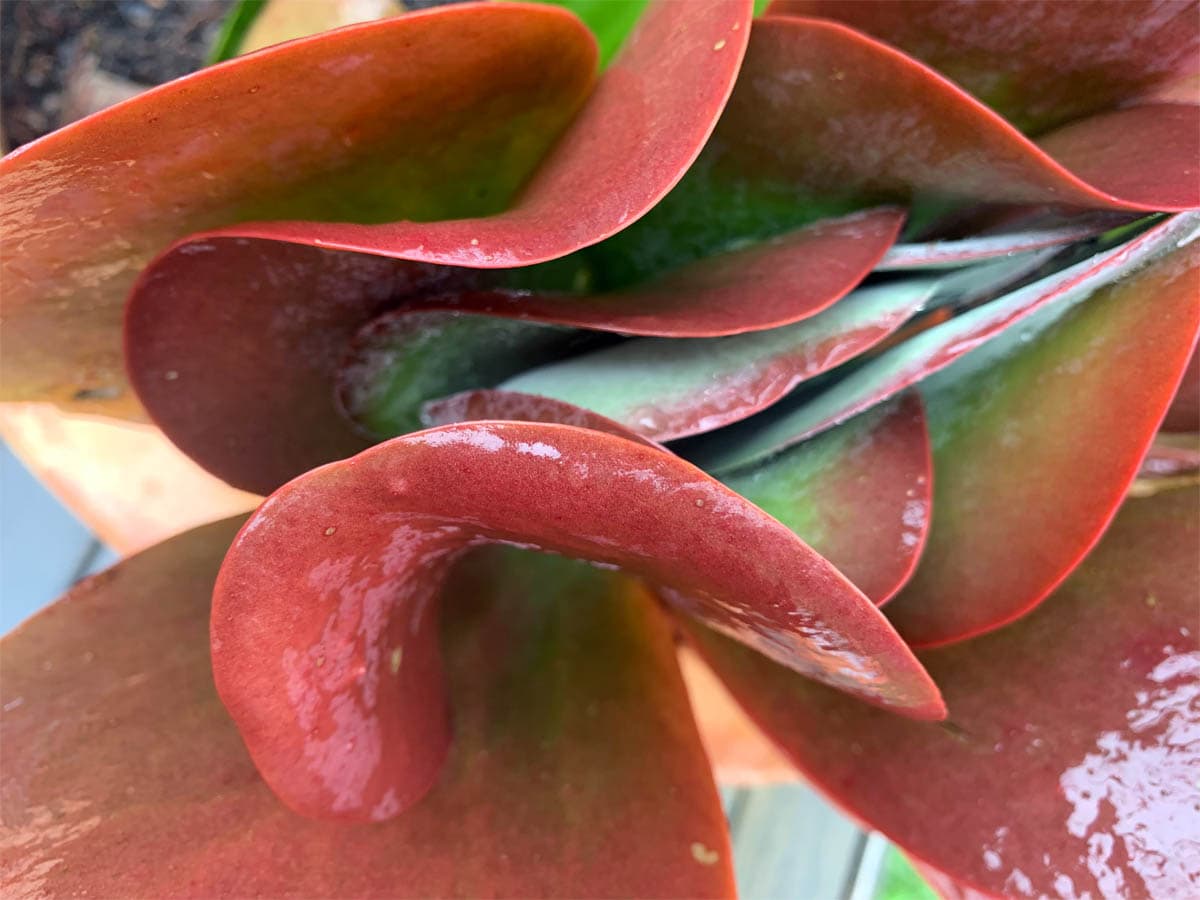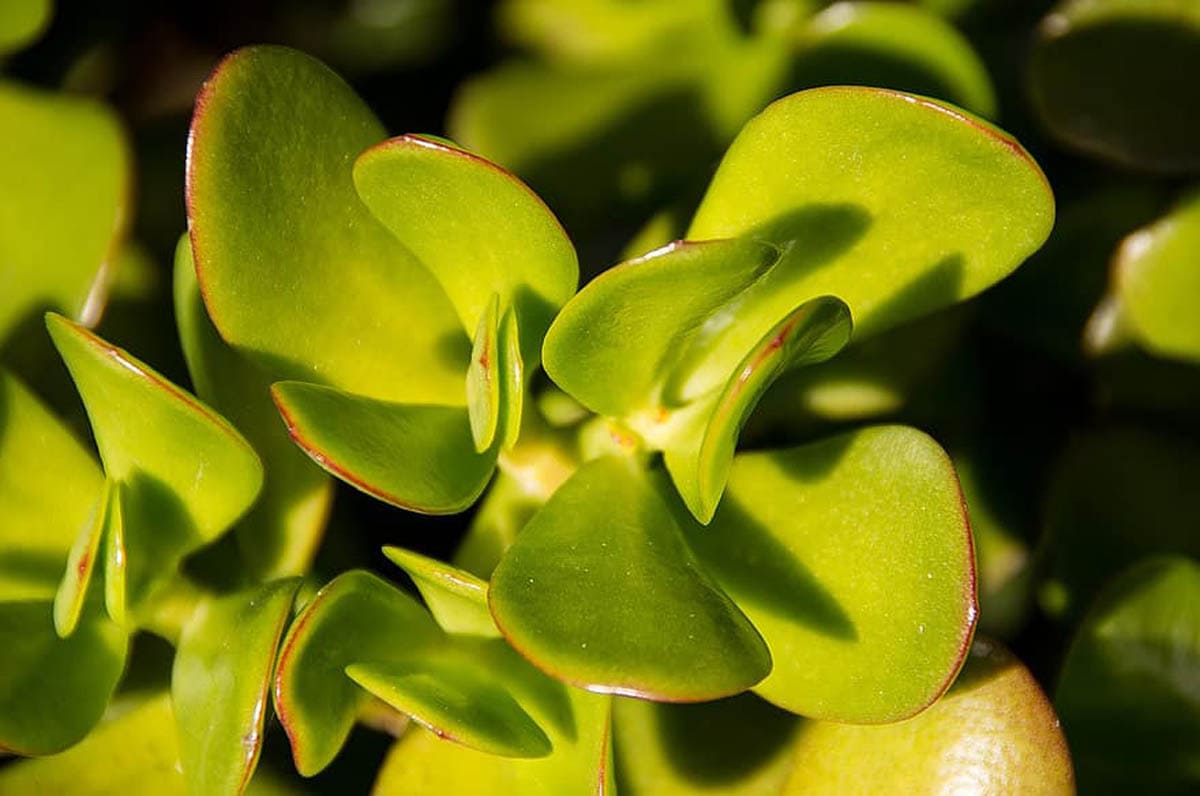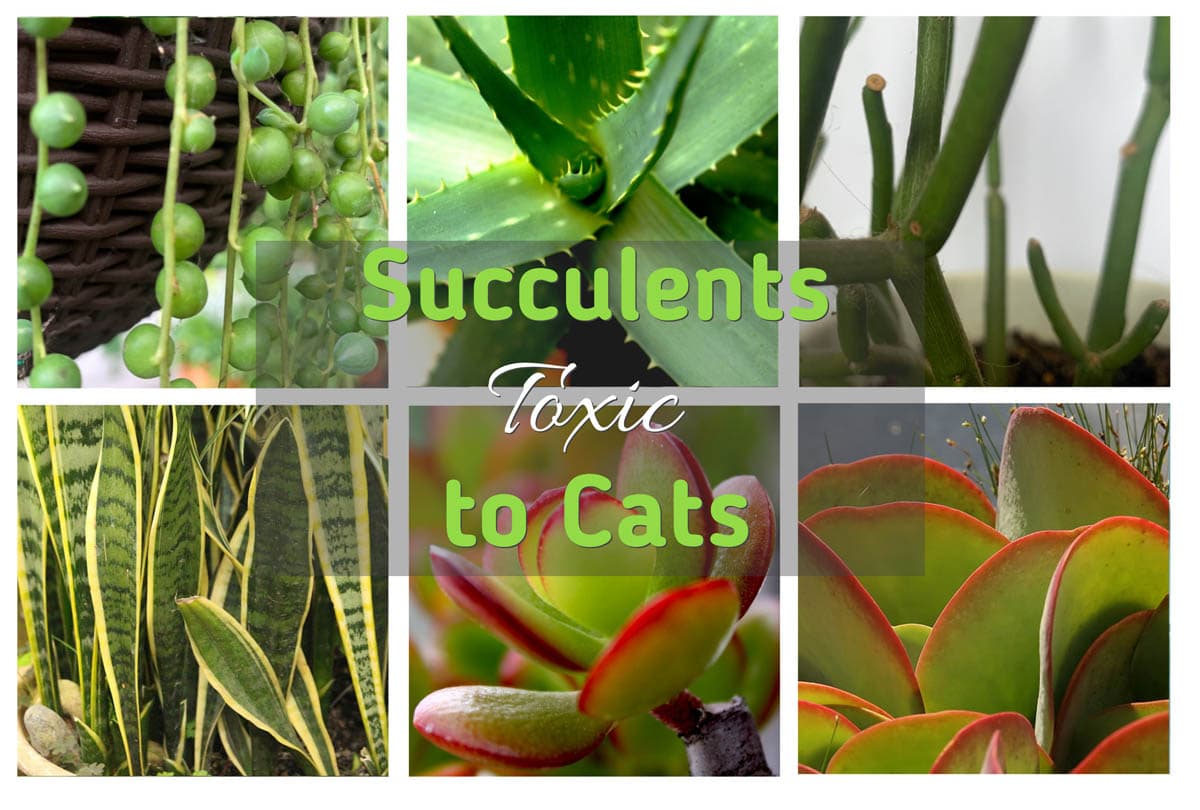Succulents Toxic to Cats at a Glance
- Curio (formerly Senecio)
- Aloe Vera
- Kalanchoe
- Euphorbia
- Crassula
- Sansevieria
About
Succulents have experienced a huge surge in popularity for their interesting appearance, hardiness and easy propagation. We look at succulents that are toxic to cats as well as their level of toxicity, common and scientific names.
Plants have evolved in several ways to protect themselves from insects and animals, some have spikes and thorns, others contain toxic chemicals or insoluble calcium oxalate crystals which sting the mouth when eaten.
Related: Succulents non-toxic to cats
Curio

- Scientific name: Curio spp., formerly known as Senecio
- Other names: Pearl Plant, String-of-Beads, String of Pearls, String of Bananas
- Level of toxicity: Mild
- Toxic component: Irritant sap and pyrrolizidine alkaloids
- Causes: Nausea, vomiting, diarrhea, abdominal pain, drooling and skin irritation
Aloe Vera

- Scientific name: Aloe Vera spp.
- Other names: Chinese Aloe, Indian Aloe, True Aloe, Barbados Aloe, Burn Aloe, First Aid Plant
- Level of toxicity: Mild to moderate
- Toxic component: Saponins and anthraquinones
- Causes: Loss of appetite, lethargy, vomiting and diarrhea
Euphorbia

Also called Spurges, Euphorbia is a large genus of plant with up to 500 species. The most commonly grown indoor plants are the Pencil Plant (Euphorbia tirucalli) and poinsettia (Euphorbia pulcherrima).
- Scientific name: Euphorbia spp.
- Other names: Firestick, Pencil Tree Plant, Pencil Cactus, Poinsettia, Crown of Thorns, Jacob’s Ladder, Devil’s Backbone, Slipper Flower Devil’s
- Level of toxicity: Mild
- Toxic component: Irritant sap
- Causes: Oral and gastrointestinal irritation, vomiting (rare)
Kalanchoe

A genus of approximately 125 species native to tropical Africa and Madagascar. There are several popular plants in this genus including Flapjack (Kalanchoe thyrsiflora), Panda Plant/Chocolate Soldier (Kalanchoe tomentosa) and Mother of Thousands (Kalanchoe daigremontiana).
- Scientific name: Kalanchoe spp.
- Other names: Flapjack, Paddle Plant, Desert Cabbage, White Lady, Geelplakkie, Meelplakkie, Plakkie, Chandelier Plant, Donkey Ears, Life Plant, Chandelier Plant, Mother of Millions, Mother of Thousands, Panda Plant
- Level of toxicity: Mild to moderate
- Toxic component: Bufadienolidecardiac glycosides
- Causes: Vomiting, diarrhea, abnormal heart rhythm.
Crassula spp.

There are approximately 200 species of Crassula native to the Eastern Cape of South Africa. Jade plant (Crassula ovata) is one of the most commonly grown of the Crassula species.
- Scientific name: Crassula spp.
- Other names: Jade Plant, Watch Chain, Lizard’s Tail, Zipper Plant, Musky Stonecrop, Shore Stonecrop, Swamp Stonecrop, Baby Jade, Dwarf Rubber Plant, Jade Tree, Chinese Rubber Plant, Japanese Rubber Plant, Silver Dollar Plant
- Level of toxicity: Moderate to severe
- Toxic component: Unknown
- Causes: Ataxia (incoordination), vomiting and depression
Sansevieria

A group of approximately 70 species, native to Africa. Snake Plant or Mother-In-Law’s Tongue (Sansevieria trifasciata) is the most well known.
- Scientific names: Dracaena trifasciata syn. Sansevieria trifasciata
- Other names: Viper’s Bowstring Hemp, Mother-in-Law’s Tongue
- Level of toxicity: Mild to moderate
- Toxic component: Saponins
- Causes: Nausea, vomiting and diarrhea
Succulents Toxic To Cats Printer-friendly PDF

